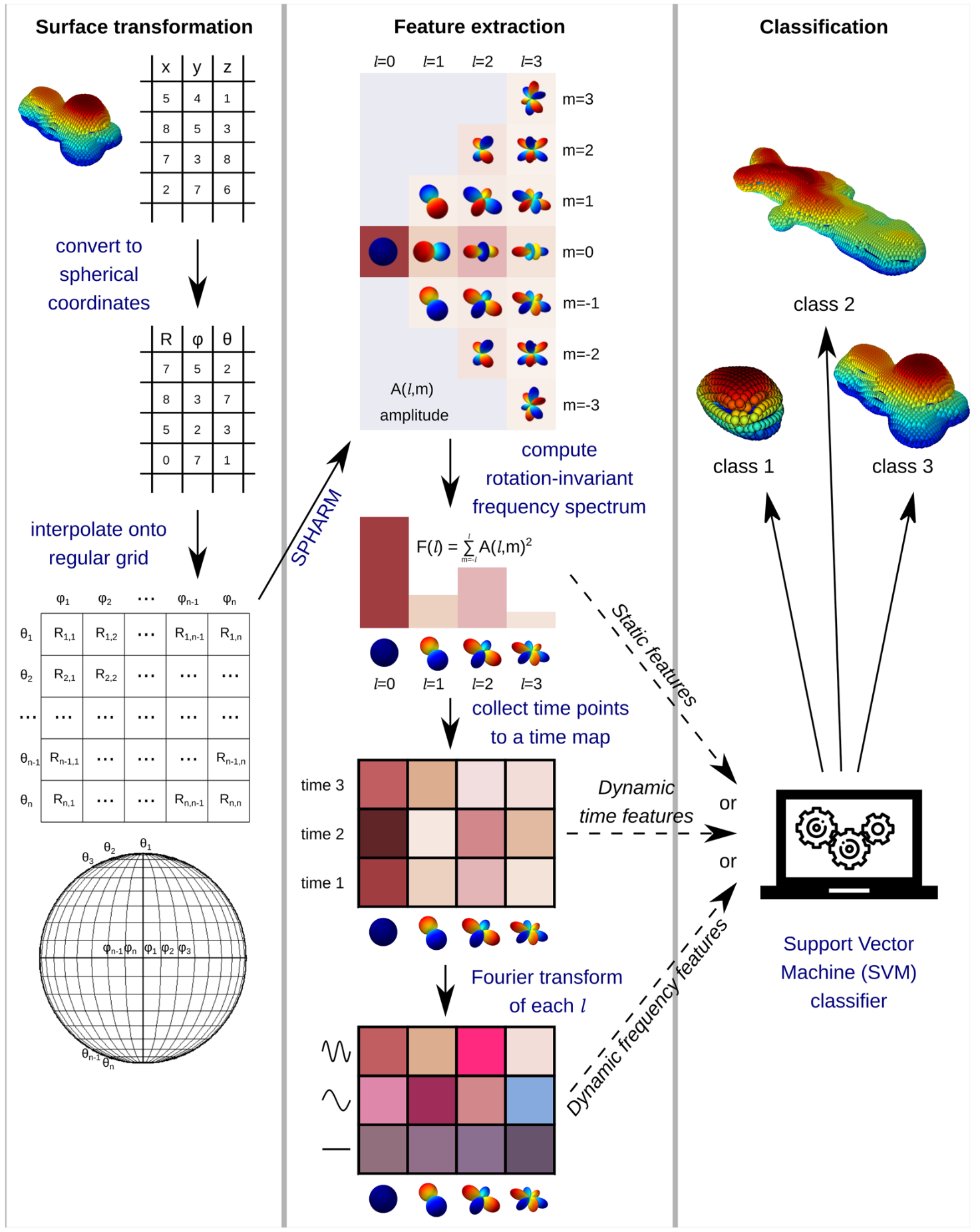Spherical harmonics for shape analysis of migrating cells
Dynamical spherical harmonics (DynSPHARM) extends normal spherical harmonics to analyze migrating cells in 3D. DynSPHARM was applied to both migrating simulated cells and T cells visualized with intravital microscopy and has been used to extract dynamic features that allowed a Support Vector Machine to classify cells from different migration conditions. For example, DynSPHARM proved a successful method to separate T-cells that were migrating on the skin, in lymph nodes and in submandibular salivary glands.
Experimental Collaborators
- Stein group at the University of Fribourg, Switzerland.

Visualized processing steps of the 3D-HyTracer on simulated hyphae
Schematic overview of the surface analysis and classification. We convert surface coordinates to a regular spherical grid, transform them with SPHARM, and compute a rotation-invariant spectrum. We use the spectrum of a single time point either as a feature vector by its own (static features) or combine it with other time points into a time map (dynamic time features). We can further convert the time map into a frequency map by Fourier transform of each degree l (dynamic frequency features). We then use one of the three feature vectors to classify cells according to their shape.
Software
In connection with DynSPHARM, two software packages were developed that are available to the public. These are a C++ package for cell migration simulation and a Python package for feature extraction and classification.






